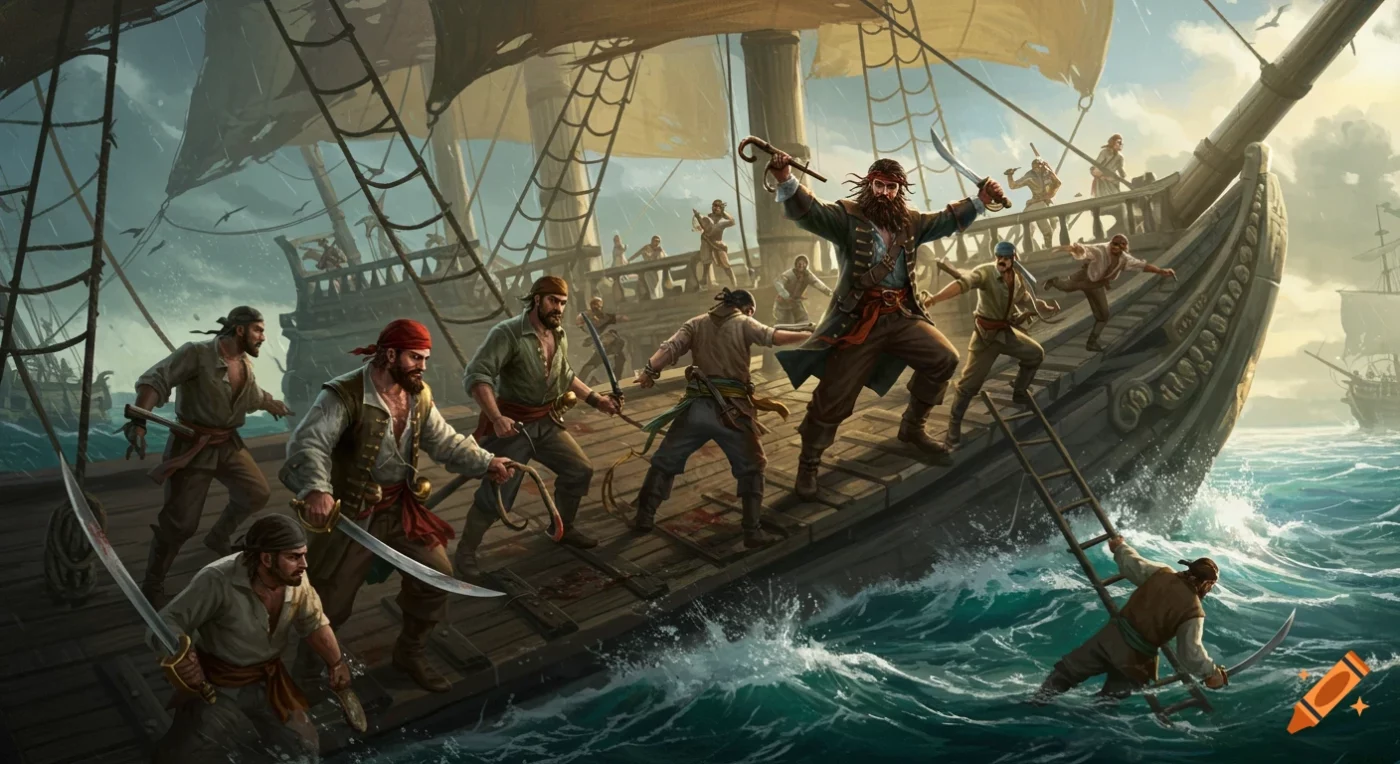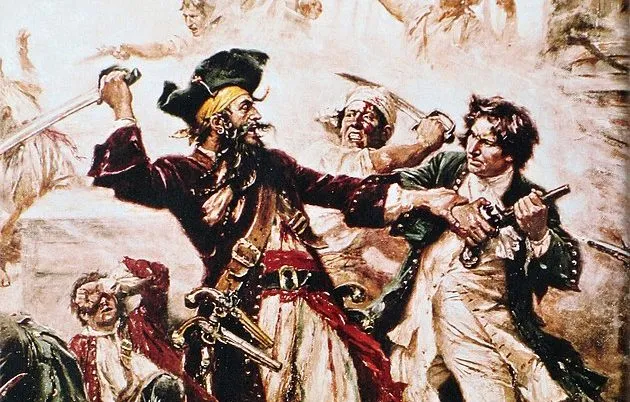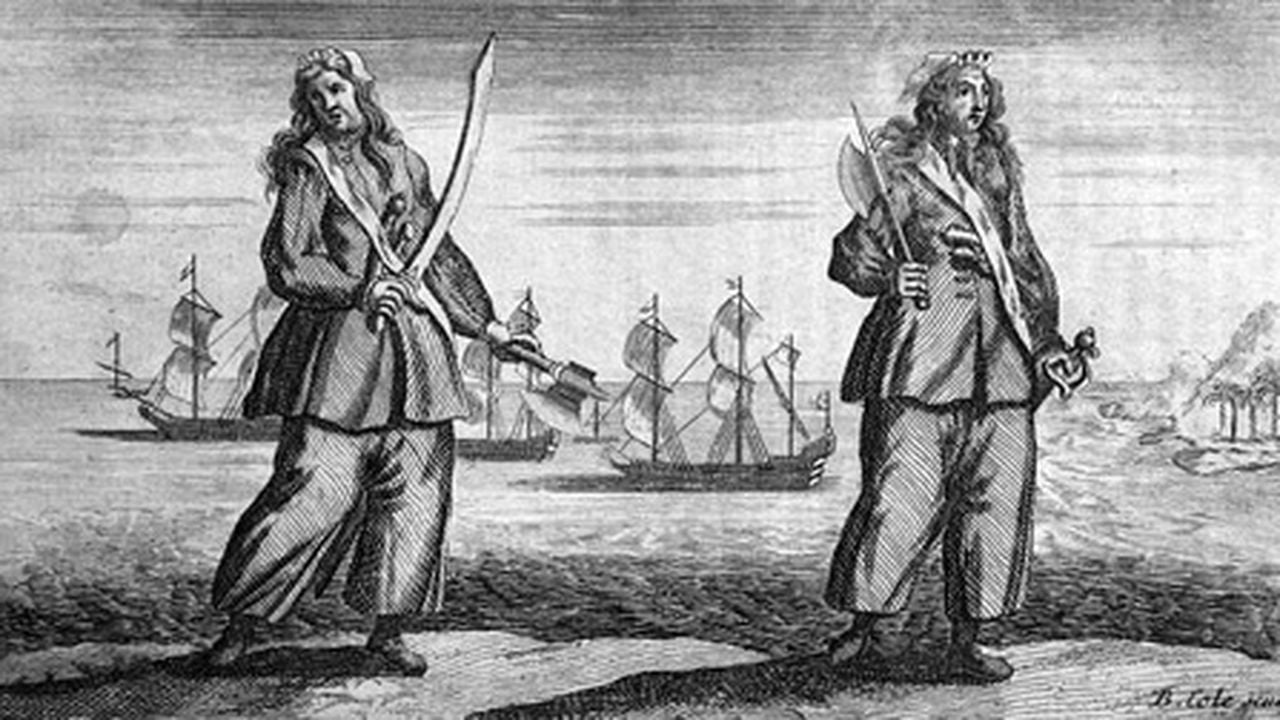Beyond the Parrots and Peg Legs
When you hear the words “Caribbean pirates,” what comes to mind? Likely, it’s a swashbuckling adventurer with a parrot on their shoulder, a peg leg, and a chest full of buried gold. This romanticized image, perpetuated by countless films and novels, is a far cry from the gritty, dangerous, and often brutal reality of life on the high seas. While the allure of treasure and freedom is undeniable, the history of real Caribbean pirates is much more complex and fascinating than the myths suggest. This post aims to delve deep into the factual accounts of these notorious figures, separating truth from fiction, examining the nuances of their daily existence, exploring the lives of infamous captains, and shedding light on the often-overlooked women pirates of Caribbean history. Prepare to have your caribbean pirate myths debunked as we unearth the true tales of the buccaneers.
I. The Golden Age of Piracy in the Caribbean: Roots and Rise
The era most commonly associated with these seafaring outlaws is known as the golden age of piracy caribbean, a period of heightened activity that left an indelible mark on maritime history. This was the true peak for the history of real Caribbean pirates.
A. Defining the Era: From Privateers to Outlaws
The Golden Age of Piracy primarily spanned from the late 17th century to the early 18th century, roughly from the 1650s to the 1730s. It didn’t emerge out of nowhere. Its roots lie in the practice of privateering, where governments commissioned private ships (privateers) to attack enemy vessels during wartime. Buccaneers, a specific type of privateer operating primarily in the Caribbean, often targeted Spanish ships. Over time, as wars ended and commissions ceased, many privateers and buccaneers, accustomed to a life of plunder, simply continued their activities without official sanction, thus becoming outright pirates.[1]
B. Why the Caribbean? A Perfect Storm
The Caribbean became the epicenter of piracy for several compelling reasons:
- Strategic Trade Routes: The region was a vital artery for the lucrative Spanish treasure fleets, laden with gold, silver, and other riches from the New World, en route to Europe. European merchant vessels also crisscrossed these waters, presenting tempting targets.
- Geopolitical Instability: Constant conflicts and shifting allegiances among European powers (Spain, England, France, Netherlands) meant a lack of strong, unified naval presence. This created a power vacuum that pirates were quick to exploit.
- Natural Harbors and Safe Havens: Islands like Nassau (New Providence in the Bahamas), Tortuga, and Port Royal (Jamaica) offered secluded coves, deep-water harbors, and lax governance, providing perfect bases for pirates to repair ships, resupply, and carouse.

C. The Decline: The Tide Turns
The Golden Age eventually waned. Factors contributing to its decline included increased naval patrols by European powers, particularly the British Royal Navy, which began actively hunting down pirates. Governments also offered amnesties to pirates who surrendered, enticing many to abandon their illicit careers. The loss of key safe havens, as colonial powers asserted greater control, further squeezed the pirates, making their way of life unsustainable. By the 1730s, large-scale piracy in the Caribbean was largely a thing of the past.
II. Real Pirate Life: Debunking Caribbean Myths and Daily Realities
Beyond the thrilling stories, what was real pirate life Caribbean daily truly like? The reality was far less glamorous and much more brutal than popular culture suggests. It’s time to have some caribbean pirate myths debunked.
A. Life Aboard a Pirate Ship: Harsh Realities
- Democracy and Discipline: Surprisingly, many pirate ships operated with a form of rough democracy. Crews would often vote on decisions, and formal “Articles of Agreement” (or pirate codes) dictated conduct, division of loot, and punishments for infractions. These articles often ensured a fairer distribution of wealth than on merchant or naval vessels, making piracy an appealing option for desperate sailors.[2]
- Living Conditions: Life was incredibly difficult. Ships were crowded, unsanitary, and rife with vermin. The diet was monotonous, consisting mainly of hardtack (a hard biscuit), salted meat, and a daily ration of rum or grog. Fresh food was a luxury only available after a successful raid or during shore leave.
- Health and Hygiene: Disease, particularly scurvy (due to lack of Vitamin C), dysentery, and venereal diseases, was rampant. Injuries sustained in battle or from accidents were common, and medical care was primitive at best, often leading to amputations without anesthesia.

B. Separating Fact from Fiction: Common Pirate Myths
Many popular pirate tropes are largely products of fiction:
- “Arrr!” and Pirate Speak: The stereotypical pirate accent and phrases like “Ahoy, matey!” are largely a Hollywood invention, popularized in the 20th century. Real pirates spoke in various regional dialects of their homelands.
- Walking the Plank: This gruesome punishment was extremely rare, if it happened at all. Pirates preferred to either kill their victims outright, maroon them, or force them to join their crew.
- Buried Treasure Maps: The idea of elaborate maps leading to buried treasure chests is almost non-existent in true pirate history. Pirates usually spent their loot quickly on drink, gambling, and women. Captain William Kidd is one of the very few known to have buried treasure, and even then, it was more about securing funds temporarily than creating a grand mystery.
- Eye Patches and Peg Legs: While some pirates undoubtedly suffered injuries, these were more a result of battle and harsh conditions than a deliberate fashion statement. Losing an eye or a limb was a genuine occupational hazard.
- Parrots and Monkeys: While some sailors might have kept exotic pets, they were not common on working pirate ships. They were noisy, messy, and impractical in the cramped, unsanitary conditions.
- Pirate Flags (Jolly Roger): The iconic skull and crossbones flag, known as the Jolly Roger, was indeed used, but its origins and variations are more complex. Different pirate captains had their own designs, all intended to strike fear into the hearts of their victims and encourage surrender without a fight.
III. True Stories of Notorious Caribbean Pirates
The true stories Caribbean pirates tell are often more dramatic and compelling than any fabricated tale. These are the figures who truly shaped the era.
A. Blackbeard (Edward Teach): The Master of Psychological Warfare
Perhaps the most fearsome and iconic pirate, Blackbeard cultivated an intimidating persona. He was known for weaving hemp into his long black beard and lighting it on fire during battle, creating a terrifying, smoke-shrouded apparition. His ship, the Queen Anne’s Revenge, was a formidable warship, and he used psychological warfare as much as cannons to achieve his goals. Blackbeard met his end in a legendary last stand against Lieutenant Robert Maynard’s forces in 1718, fighting ferociously until his death.[3]

B. Captain Henry Morgan: From Buccaneer to Governor
One of the most successful privateers and buccaneers, Henry Morgan‘s career blurs the lines between legal and illegal piracy. Operating with English commissions, he led devastating raids on Spanish strongholds like Portobello and Panama City. Unlike many of his contemporaries, Morgan retired wealthy and, astonishingly, became the Lieutenant Governor of Jamaica, tasked with suppressing the very piracy he once practiced. His story is a testament to the fluid nature of maritime legality in the era.
C. “Calico Jack” Rackham: The Flag and His Crew
“Calico Jack” Rackham is perhaps most famous for his distinctive Jolly Roger flag: a skull above two crossed cutlasses. His career as a pirate was relatively short-lived but notable for his association with two of history’s most famous women pirates, Anne Bonny and Mary Read, who sailed under his command. Rackham was eventually captured and executed in Jamaica, but his legacy lives on through his flag and his remarkable crew.
D. Other Notable Figures
- Bartholomew Roberts (“Black Bart”): One of the most successful pirates of the Golden Age, capturing hundreds of ships. He was known for his strict discipline and dapper dress.
- William Kidd: A controversial figure, Kidd started as a privateer commissioned to hunt pirates but was later accused and executed for piracy himself. His story fueled the myth of buried treasure.
IV. Women of the High Seas: Caribbean’s Unsung Pirate Queens
While often overlooked in popular narratives, women pirates Caribbean history played significant roles, defying societal norms and proving themselves as formidable as any male buccaneer. Their true stories Caribbean pirates are essential to understanding the full scope of piracy.
A. Anne Bonny: The Fierce Fighter
Born in Ireland, Anne Bonny famously abandoned a respectable life to pursue adventure. She met “Calico Jack” Rackham in Nassau, a pirate haven, and soon joined his crew, disguising herself as a man initially. She quickly earned a reputation for her ferocity and willingness to fight alongside the men, often being described as more ruthless than many of her male counterparts.[4]
B. Mary Read: A Life of Disguise and Defiance
Mary Read‘s life was a saga of disguise. From a young age, she dressed as a boy to secure work, serving in the military and on ships before becoming a pirate. She eventually encountered Anne Bonny and Calico Jack’s crew. It is said that Bonny was initially attracted to Read, believing her to be a man, before Read revealed her true identity. The two women became close friends and fought side-by-side in battles, earning the respect and fear of their male shipmates and enemies alike.

C. Their Capture and Fate
In 1720, Calico Jack’s ship was attacked by a privateer. While most of the male crew were too drunk to fight, Anne Bonny and Mary Read valiantly defended the ship. They were eventually captured, tried, and sentenced to hang. However, both women “pleaded their bellies,” meaning they claimed to be pregnant, which temporarily stayed their executions. Mary Read died in prison, likely from fever, but Anne Bonny’s ultimate fate remains a mystery, adding to her legendary status.[5]
Conclusion: The Enduring Legacy of the Real Caribbean Pirates
From the bustling harbors of Port Royal to the treacherous waters of the Spanish Main, the history of real Caribbean pirates is a tapestry woven with threads of daring adventure, brutal violence, and surprising social structures. We’ve seen how caribbean pirate myths debunked reveal a far more complex reality than the simplified tales often told. The real pirate life Caribbean daily was one of hardship, danger, and a unique form of maritime democracy.
The golden age of piracy Caribbean may have ended centuries ago, but the allure of these rebellious figures, from the terrifying Blackbeard to the defiant women pirates Caribbean history, continues to fascinate. Their true stories Caribbean pirates offer a glimpse into a lawless world that, for a brief period, challenged empires and forged its own rules on the high seas. The true history, in all its grit and glory, is often far more compelling than the legends.
References
- [1] History.com: The Difference Between Privateers, Buccaneers, and Pirates
- [2] Smithsonian Magazine: The Pirate Code
- [3] National Geographic: Blackbeard’s Queen Anne’s Revenge
- [4] Britannica: Anne Bonny
- [5] Royal Museums Greenwich: Mary Read and Anne Bonny



